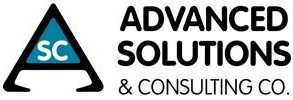Enterprise Resource Planning (ERP) software originated in the manufacturing sector, though the category has since embraced many other areas of finance and business operations. This does not mean, however, that every ERP solution is automatically suitable for a manufacturing business. The right ERP for manufacturing should integrate manufacturing capabilities like production planning and customer management with modules for processing sales orders, purchasing inventory, and more. This will lead to better manufacturing efficiency and accuracy.
With these ideas in mind, here are nine features that every manufacturer should want in their ERP software:
#1 – Estimating
Estimating is one of the most important factors for ensuring that a production run will be profitable. ERP software should automate estimating the costs of producing a product by analyzing the cost of materials, labor, and overhead. Great ERP software will then convert estimates into bills of materials (BOMs), production orders, and customer-facing price quotes. Estimators can easily arrive at a profitable price for a project if they have estimates that can be adjusted for changes in underlying production costs.
#2 – Product Configuration
An effective manufacturing ERP, such as Acumatica’s Manufacturing Module, uses a multilevel, dimensional, rules-based system for product configuration. It will include non-hierarchical feature selections and configuration evaluations for quotes, sales orders, and production orders. Managers should have access to real-time price and cost rollups.
#3 – Advanced Planning and Scheduling
Planning shop schedules to ensure that production deadlines are not missed is a “must have” for manufacturers using ERP software. To maximize efficiency, the software should allow for managing and monitoring the shop floor schedule, employee schedules, and machine resources schedules. The ERP system should also include “what-if” planning and capable-to-promise capabilities.
#4 – Production Management
A good ERP production management function will enable managers to stay on top of every critical area of production operations. It will also track all costs at the project level, which can then be compared to the estimated budget. With the ability to compare actual costs to estimated costs, problems or needed changes become clear. Managers can then optimize processes on the shop floor.
#5 – Engineering Change Control
Engineering changes, such as design modifications, often lead to trouble on the shop floor. Human error tends to be the culprit. To mitigate this problem, ERP software should automate, control, and organize all change requests, plans, and actual changes to the BOM. This serves to reduce or eliminate human error. Engineering should have full control of the entire process from entry to approval.
#6 – Order Management
Order management is vital to manufacturers and should thus be a feature of any ERP system. An ERP system can automate order fulfillment, streamline procurement, and manage all sales activities. The ERP system should allow manufacturers to serve both internal and external clients.
#7 – Material Requirements Planning (MRP)
MRP is about balancing material requirements with production schedules. It can also improve customer satisfaction by accurately and reliably estimating delivery based on material availability and production time. ERP with MRP capabies allows for optimization of inventory and resources, along with cost control.
#8 – Warehouse Management System (WMS)
Efficient manufacturing will drive overall profitability best when it’s paired with an effective WMS capability. An ERP with a good WMS module will streamline the distribution process through advanced warehouse operations in receiving, inventory management, and order fulfillment. The system should also support barcode scanners and mobile devices, making inventory management easier.
#9 – Advanced Financials
The right ERP for manufacturing will provide robust financial tools. These include General Ledger (GL) consolidation, sub-accounts, and automatic revenue recognition. Having up-to-date financial data improves decision-making and profitability.
Acumatica’s cloud ERP solution offers an example of a manufacturing ERP that meets these nine criteria. Its Manufacturing Management module coordinates activities in real-time across the business. Supervisors and managers get access to the most current data to make better decisions. They can also access approvals, production orders, schedules, and material plans in the shop or on the go. As a cloud ERP system, Acumatica makes information available anytime, anywhere, and from any device.
To learn more, or see a demo of Acumatica Manufacturing Management, contact us to schedule a free consultation.
Additional Manufacturing Resources
The Benefits of Manufacturing Software in Make To Order and Make To Stock
9 Ways You Can Drive Manufacturing Growth in the Digital Economy
Stuck in the Middle: Why Job Shops Get Overlooked By ERP and MRP

